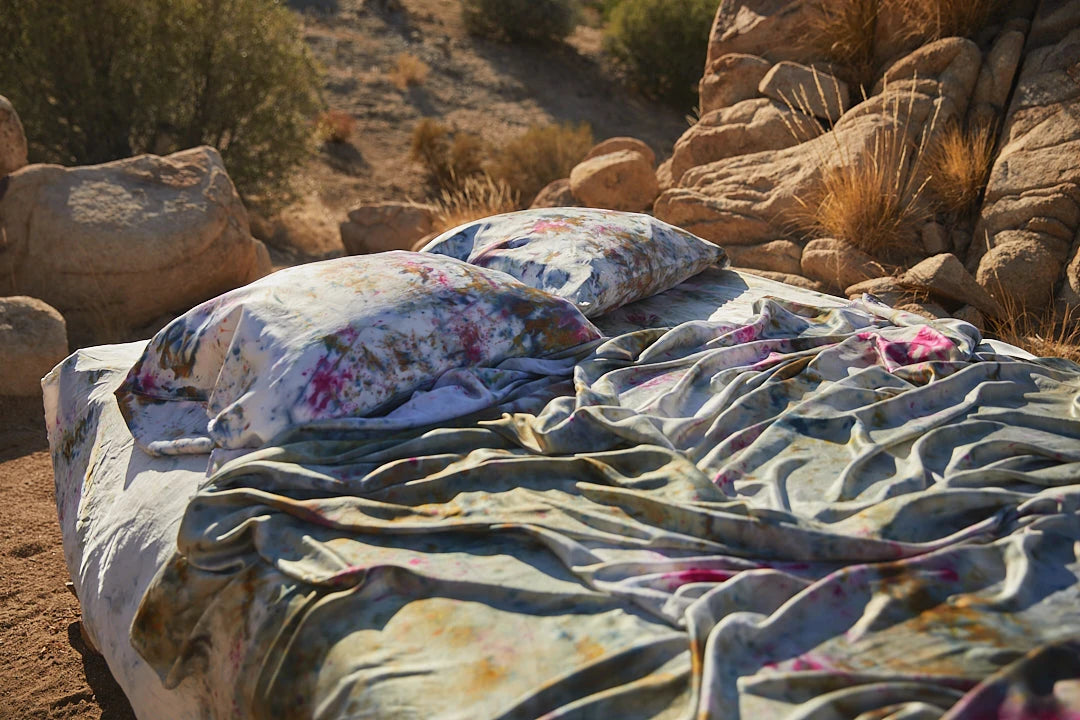How do you balance your time between creating art and the business side of your practice?
I actually have a lot of fun with the business side of things. My father and brother ran a family business—a venture capital company—so growing up, family dinners were often filled with conversations about strategies and negotiations. Because of that, doing the business side of my work feels a bit like playing a game—it’s engaging and, in some ways, less serious than the art-making process itself.
What I do find challenging, though, is the art market and the art world. It can feel very cryptic and full of gatekeepers, and there are so many moments where I feel frustrated by not knowing how to navigate it. That’s definitely the harder part for me.
Are there particular themes or messages you strive to express through your artwork?
Yes, though it’s difficult to put into words—I feel much more comfortable expressing myself through the abstraction of visual art.
I try to capture the contemporary world and the beauty I see in it. I’m drawn to sharing the excitement I feel when I encounter stories, mysteries, or fleeting scenes in my daily life that spark something deeper in me. These moments often leave me with a sense of wonder, almost like a spiritual experience.
I’m fascinated by petrol stations, supermarkets, human-made objects, natural elements, and the world inside my mind—the stories my friends tell me, the way they shape my perspective.
Through my work, I also want to show that finding a voice to express yourself can good. It’s something that made me feel better, less tangled in my own thoughts, and I believe anyone can do the same.
What role does collaboration play in your creative process? Have you collaborated with other artists?
I love people.
It took me a long time to learn how to work with teams because I used to be so disorganized and struggled to align different energies, which is such an important part of collaboration.
In recent years, I’ve worked hard to improve my ability to involve others in my projects, and now it’s become one of my favorite things to do. Collaboration brings a new level of energy and ideas that I couldn’t achieve on my own.
Sometimes, though, I take it too far because the solitude of being an artist can be difficult to handle. Working with others helps balance that for me.
How do you stay motivated and inspired when the creative process gets challenging?
This is something I’ve gotten much better at over the years—almost like developing a psychological toolset of perseverance and patience. It’s so important for an artist because the path is rarely clear. You have to convince yourself every day to move forward blindly toward an unknown and uncertain destination.
I’ve learned that every step, no matter how small, is fundamental. Mistakes are inevitable, and it’s not a sprint—it’s a long, solitary marathon. Accepting that has helped me stay motivated even when the creative process feels difficult.
What advice would you give to emerging artists trying to find their style or voice?
Don’t overthink it—just create as much as you can. Collaborate with friends, experiment with everything, be patient, share your work, and be open to feedback.
When I was starting out, I wasted a lot of time getting frustrated because I wasn’t getting the collaborations, grants, or residencies I was hoping for. I also spent far too long waiting for an email to arrive with the perfect opportunity, instead of creating my own. It can feel awkward or embarrassing to start something just because you want to, without anyone asking you to do it. But if you want to be an artist, it’s so important to overcome that and start creating for yourself as soon as possible.
What is the most rewarding aspect of being an artist for you?
Almost never having to use an alarm clock in the morning—jajaja.
I think the most rewarding part is also the scariest: that your life and your work completely overlap. They feel like the same thing. It’s a bit like always being on vacation, but at the same time, never really being on vacation.
Can you describe your ideal creative environment? What elements are essential for you?
This is as difficult as finding the perfect house, city, or partner. It needs to be peaceful but with a bit of electricity in the air. It should have supportive friends nearby, but not so much comfort that it gets too easy. It should be beautiful, but also a space where it’s okay to make a mess.
The search for the perfect creative environment is so interesting because, in the end, nothing works forever. Things need to change constantly, and your needs evolve along the way. That’s where I’m at—figuring it out as I go.
Is there a dream project or collaboration you hope to pursue one day?
This is a scary one to answer—I’m afraid to say something out loud. There’s fear in it coming true, and fear in it not coming true. The genie in the lamp can be tricky, so I’d rather let myself be surprised.
What is your favorite item from Upstate and why?
I love the leisure set in forest because they’re both elegant and ultra-comfortable. You can wear them on a 12-hour flight, arrive at your destination, put on a bit of lipstick, and be ready for a party.
Photos taken by Teresita Colsa








